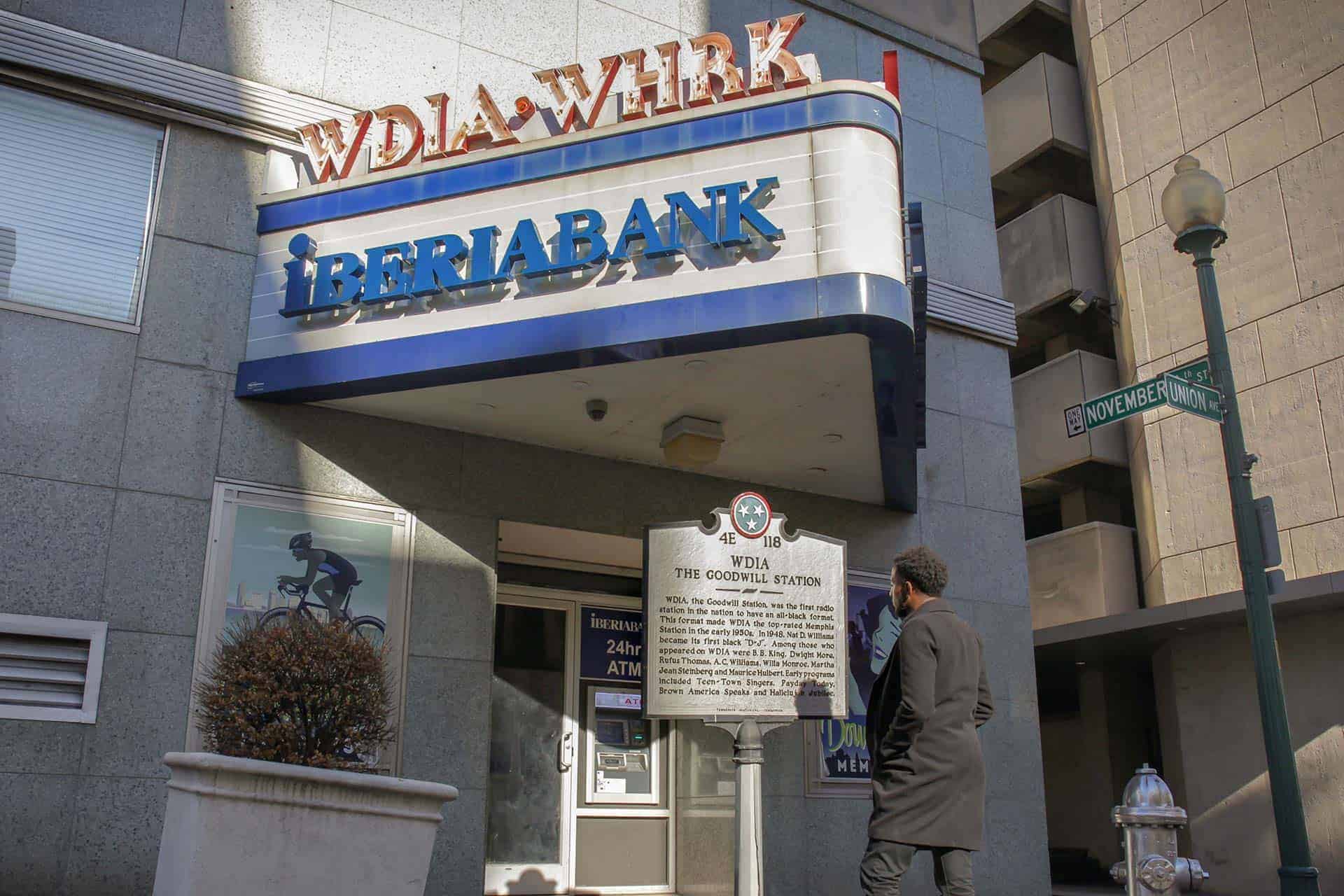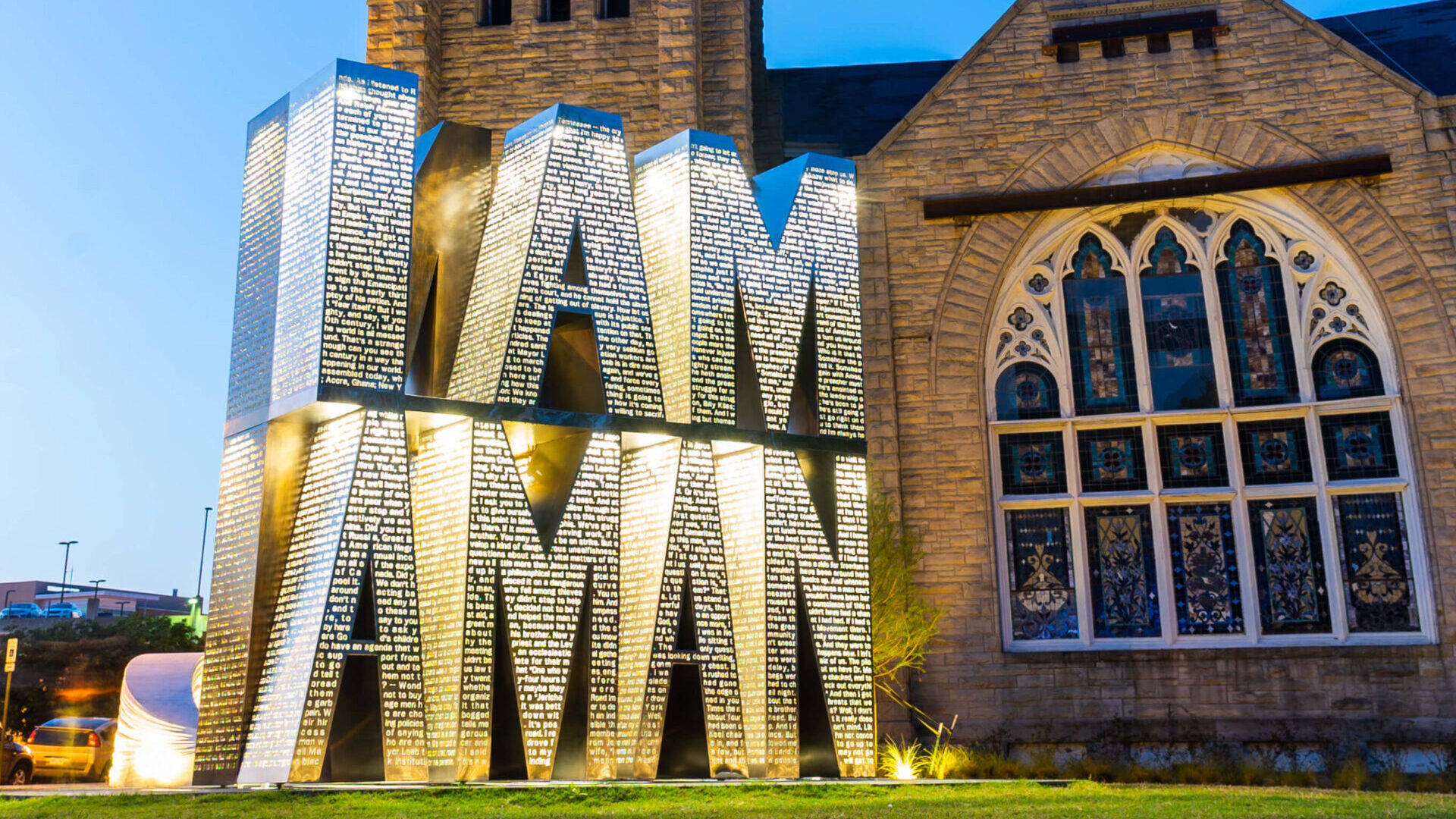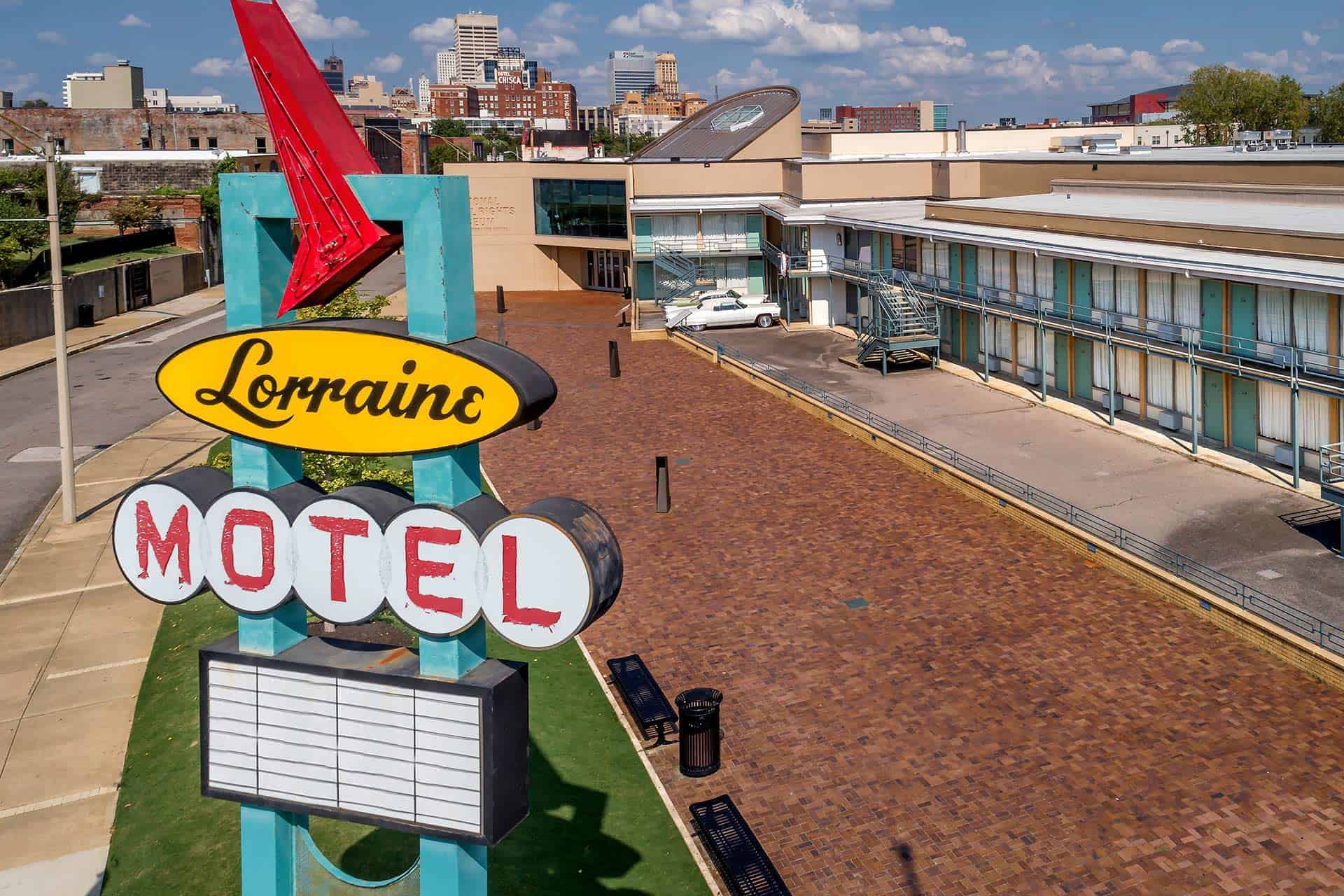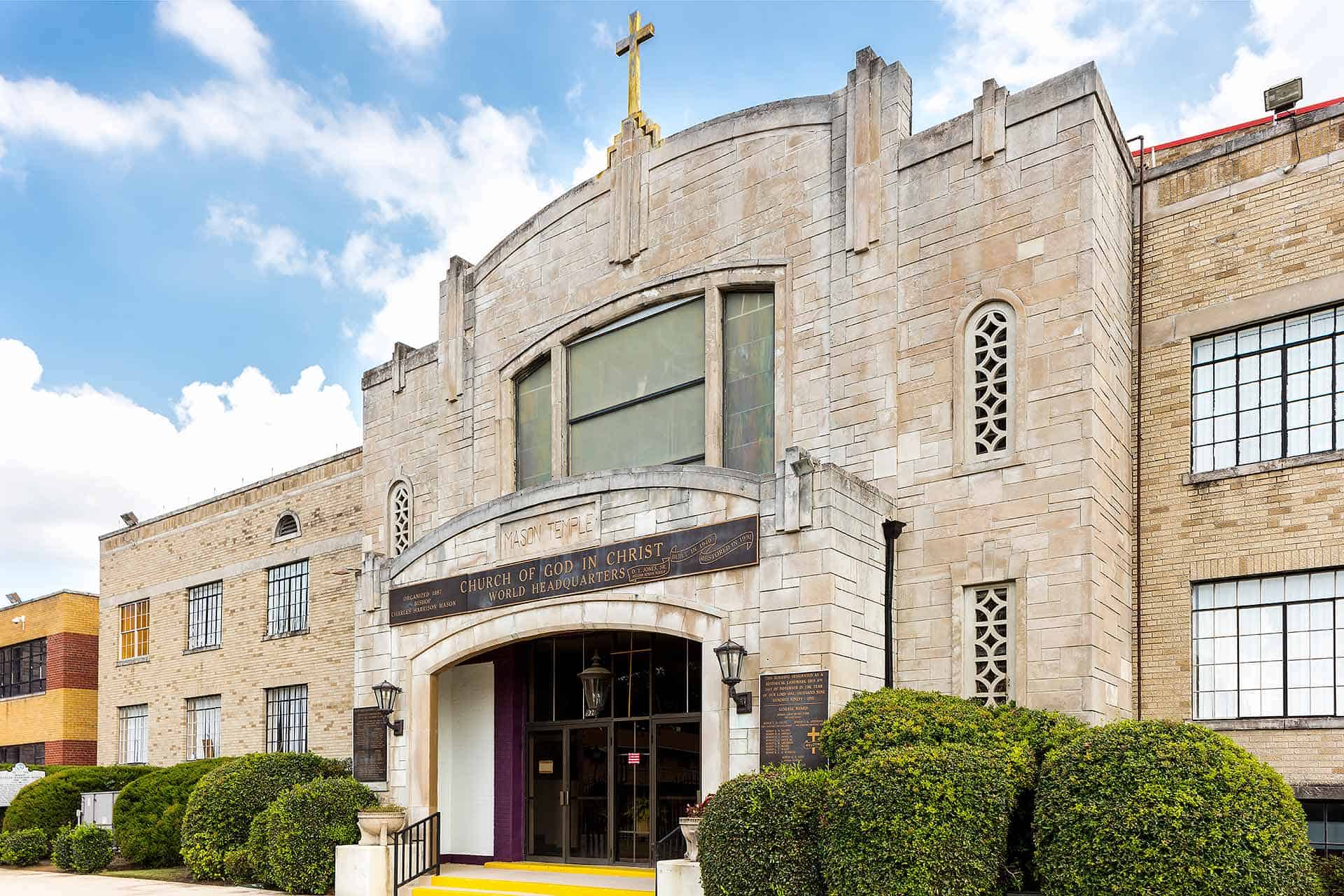Beale Street, established in 1841 and one of the most iconic streets in America, became a thriving area for Black commerce and culture around the time of the Civil War. But in the 1870s, yellow fever hit Memphis and severely affected the city’s population. As a result, the city had to forfeit its charter in 1879. During this time, formerly enslaved Robert Church acquired land in the area, and his investments helped restore the business community’s confidence in Memphis, which led to the regaining of its charter. Among Church’s contributions was the Robert R. Church Park at the corner of Fourth and Beale. The park quickly became a gathering center for blues musicians and featured a 2,000-seat auditorium.
Beale Street was also home to many Black-owned businesses, clubs, restaurants, and shops and was the headquarters of Ida B. Wells’ anti-segregationist newspaper, Free Speech. The newspaper office was housed in the historic First Baptist Church (Beale Street), which was built by a congregation of formerly enslaved persons.
In the first half of the 20th century, Beale Street served as the inspiration behind many blues hits and creative works by musicians such as W.C. Handy, who wrote “Beale Street Blues.” From the 1920s to 1940s, artists such as Muddy Waters, Louis Armstrong and B.B. King played on the street and subsequently developed the legendary Memphis blues sound. During the Civil Rights Movement, the area was also where African Americans came to entertain and be entertained, shop, strategize and protest. When city sanitation workers decided to strike in response to deplorable job conditions, they marched down Beale Street, and Dr. Martin Luther King Jr. came to Memphis in support. The demonstrations were a precursor to his assassination on April 4, 1968.
Despite the closing of many sections of the storied street by the 1960s, Beale Street saw a successful revitalization. Today, it continues to be a hub for music, nightlife, dining and the arts. Cultural venues such as the Historical Daisy Theatre/Randle Catron Interpretive Center and the Withers Collection Museum & Gallery continue Beale Street’s artistic history. The Daisy Theatre, built in 1917, is filled with architectural elements from the early cinema era. Grand entrances and balconies are among the elaborate details in what was one of the key entertainment venues for African Americans in the Mid-South. In the 1930s, the New Daisy Theatre was built across the street and was used for concerts. The Withers Collection Museum & Gallery, toward the end of Beale Street, houses an archive of 1.8 million images by photographer Dr. Ernest C. Withers. The building was Withers’ working studio, and visitors can see displays of his iconic images of legendary Civil Rights Movement events as well as blues and jazz performers.










